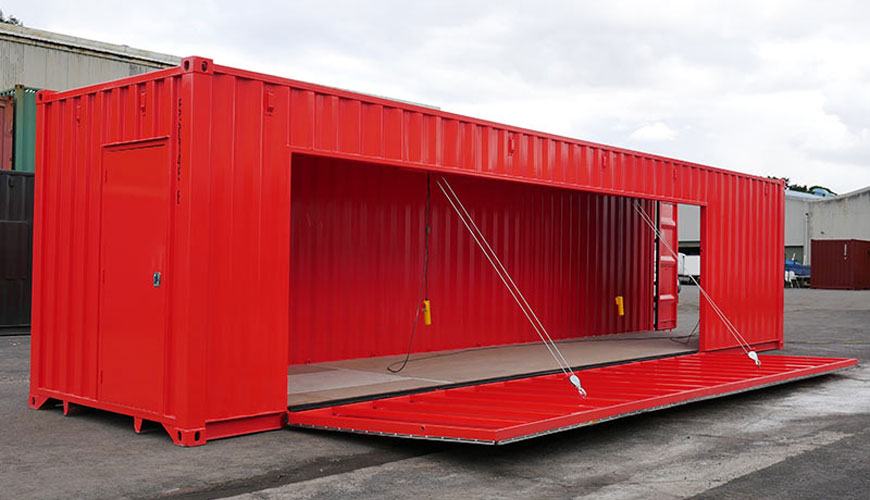

EUROLAB laboratory provides testing and compliance services within the scope of ASTM D999 standard. The ASTM D999 standard covers vibration testing of filled shipping containers. Such tests can be used to evaluate the performance of a container with its inner packaging and closures, both in terms of strength and the protection it provides to its contents when subjected to vibration, such as experienced during transport.

These procedures are suitable for testing containers of any form, material, type, inner package design, closure means, and any size and weight. They are not intended to determine the response of products to vibration for product design purposes, nor are they intended to test products in their operational configuration as other procedures are available for these purposes.
Resonance reactions during shipping can be severe and cause packaging or product failure. Determining the nature of critical frequencies and packet stresses can help minimize the impact of these events.
Exposure to vibration can affect the shipping container, inner packaging, sealing devices and contents. These tests allow analysis of the interaction of these components. A design change to one or more of these components can be used to achieve optimum performance in the transport environment.
Method A1 (Vertical Movement) and A2 (Rotational Movement) Repeated Shock Tests: It may be suitable for testing individual containers carried indefinitely on the bed of a vehicle, and may be suitable for testing the amplification of vibrations in unit loads or stacks of containers that may be subject to repeated shocks.
The A1 (Vertical Motion) and A2 (Rotating Motion) methods produce different vibrational motions and therefore different forces that can cause different damage modes and intensities. The results of these two methods may not be correlated.
Method B: Single Container Resonance Tests, tests or determines the ability of a container and its inner packaging to shield the contents from shipping vibration, especially when the container and its contents are capable of resonating responses.
Method C: The Pallet Load, Combined Cargo or Vertical Bulk Resonance Test determines the presence and effects of resonance in palletized loads and multi-unit stacked loads and whether the strength of the containers is sufficient to withstand dynamic loads. when stacked.
Any or all of these test methods may be used with test intensities, frequency ranges and test times as specified in the specification as determined by the appropriate performance specification. While these tests do not simulate the shipping environment, they do aim to create the potential to damage the shipping environment. The results of any of these methods may differ from the results of the others.
These test methods include vibration testing of filled shipping containers. Such tests can be used to evaluate the performance of a container, with its inner packaging and closures, both in terms of strength and the protection it provides to its contents when subjected to vibration, such as during transport. These procedures are suitable for testing containers of any shape, material, type, inner package design, closure, and any size and weight. It is not intended to determine the vibration response of products for product design purposes or to test products in their operational configurations as there are more appropriate procedures for these purposes.
Values stated in inch-pound units should be considered standard. Values in parentheses are mathematical conversions to non-standard SI units, provided for informational purposes only.
This standard does not purport to address all, if any, safety concerns associated with its use. It is the responsibility of the user of this standard to establish appropriate safety and health practices and to determine the applicability of regulatory restrictions prior to use.
Our organization, EUROLAB, provides standard test methods services for vibration testing of shipping containers, within the framework of national and international standards, with its trained and expert staff and advanced technological equipment, among numerous test, measurement, analysis and evaluation studies. Provides testing services within the scope of ASTM D999 standard.
To get an appointment, to get more detailed information or to request an evaluation, you can ask us to fill in our form and reach you.